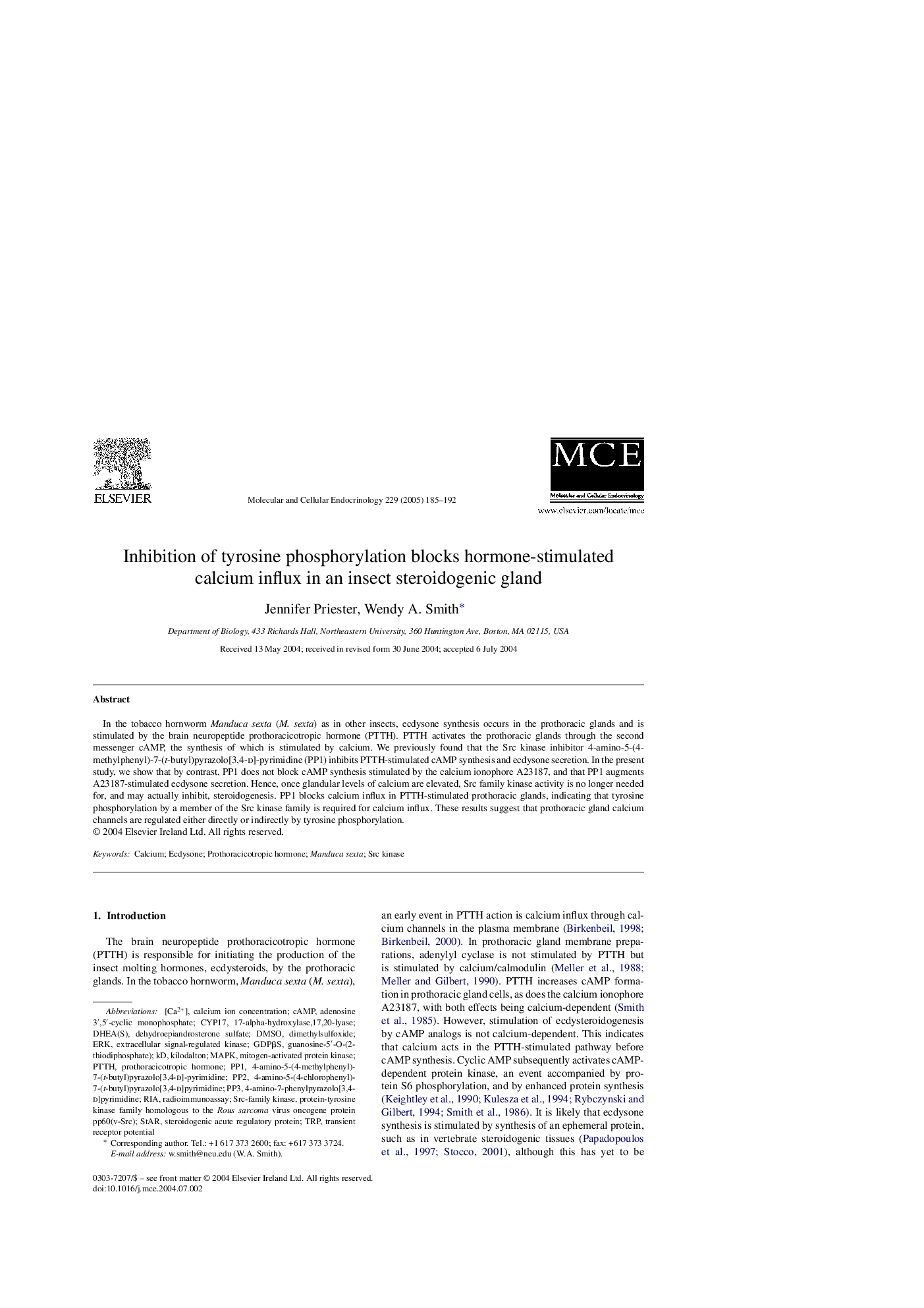| Article ID | Journal | Published Year | Pages | File Type |
|---|---|---|---|---|
| 9915062 | Molecular and Cellular Endocrinology | 2005 | 8 Pages |
Abstract
In the tobacco hornworm Manduca sexta (M. sexta) as in other insects, ecdysone synthesis occurs in the prothoracic glands and is stimulated by the brain neuropeptide prothoracicotropic hormone (PTTH). PTTH activates the prothoracic glands through the second messenger cAMP, the synthesis of which is stimulated by calcium. We previously found that the Src kinase inhibitor 4-amino-5-(4-methylphenyl)-7-(t-butyl)pyrazolo[3,4-d]-pyrimidine (PP1) inhibits PTTH-stimulated cAMP synthesis and ecdysone secretion. In the present study, we show that by contrast, PP1 does not block cAMP synthesis stimulated by the calcium ionophore A23187, and that PP1 augments A23187-stimulated ecdysone secretion. Hence, once glandular levels of calcium are elevated, Src family kinase activity is no longer needed for, and may actually inhibit, steroidogenesis. PP1 blocks calcium influx in PTTH-stimulated prothoracic glands, indicating that tyrosine phosphorylation by a member of the Src kinase family is required for calcium influx. These results suggest that prothoracic gland calcium channels are regulated either directly or indirectly by tyrosine phosphorylation.
Keywords
Trpguanosine-5′-O-(2-thiodiphosphate)DHEA(S)4-amino-5-(4-chlorophenyl)-7-(t-butyl)pyrazolo[3,4-d]pyrimidineGDPβSPP3Src kinaseManduca sextaPP1PP2RIACYP17kiloDaltonERKcAMPDMSOMAPK[Ca2+]adenosine 3′,5′-cyclic monophosphateEcdysonePTTHDimethylsulfoxideradioimmunoassayStardehydroepiandrosterone sulfateCalcium ion concentrationProthoracicotropic hormonetransient receptor potentialSteroidogenic acute regulatory proteinmitogen-activated protein kinaseCalciumSrc-family kinaseextracellular signal-regulated kinase
Related Topics
Life Sciences
Biochemistry, Genetics and Molecular Biology
Cell Biology
Authors
Jennifer Priester, Wendy A. Smith,
